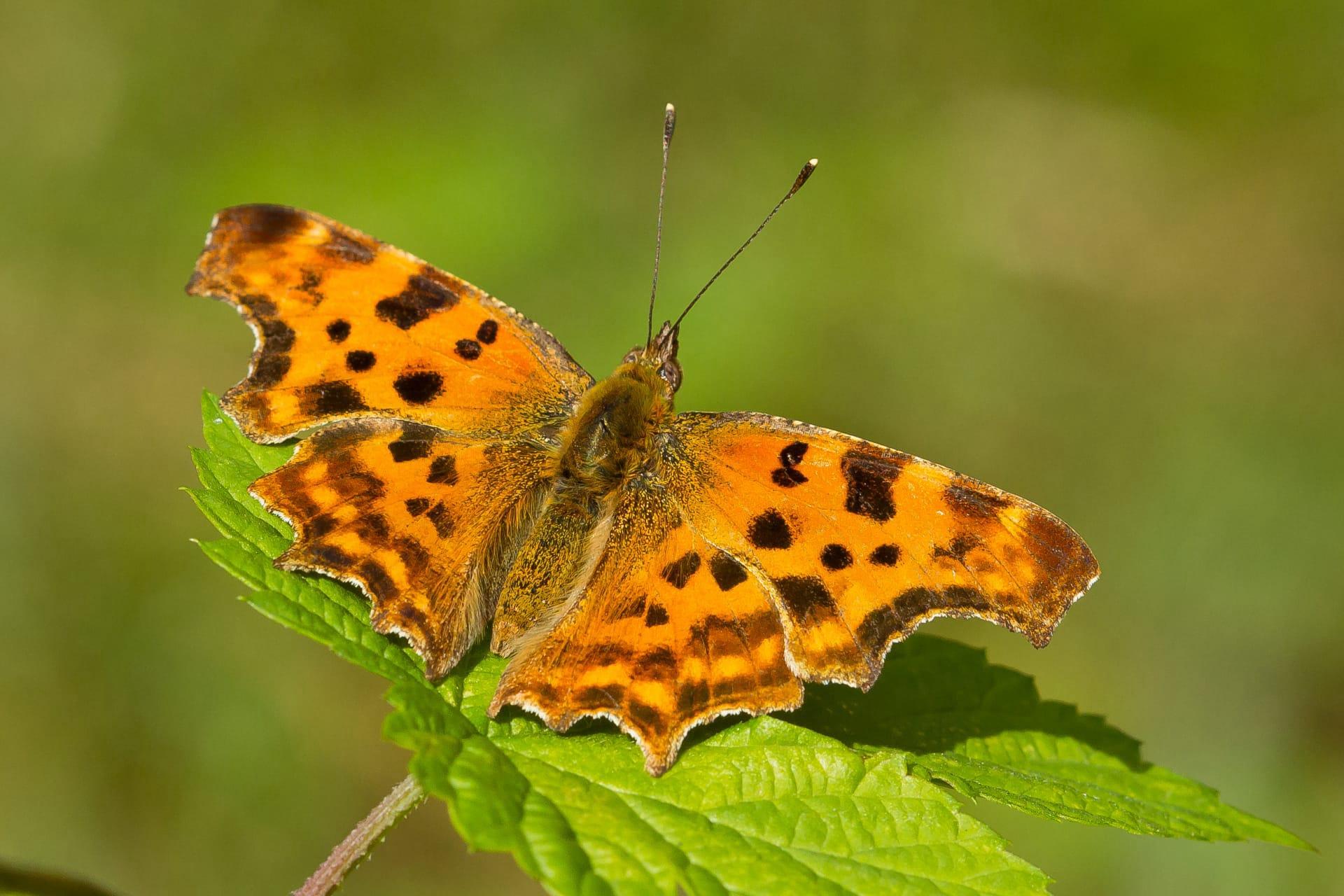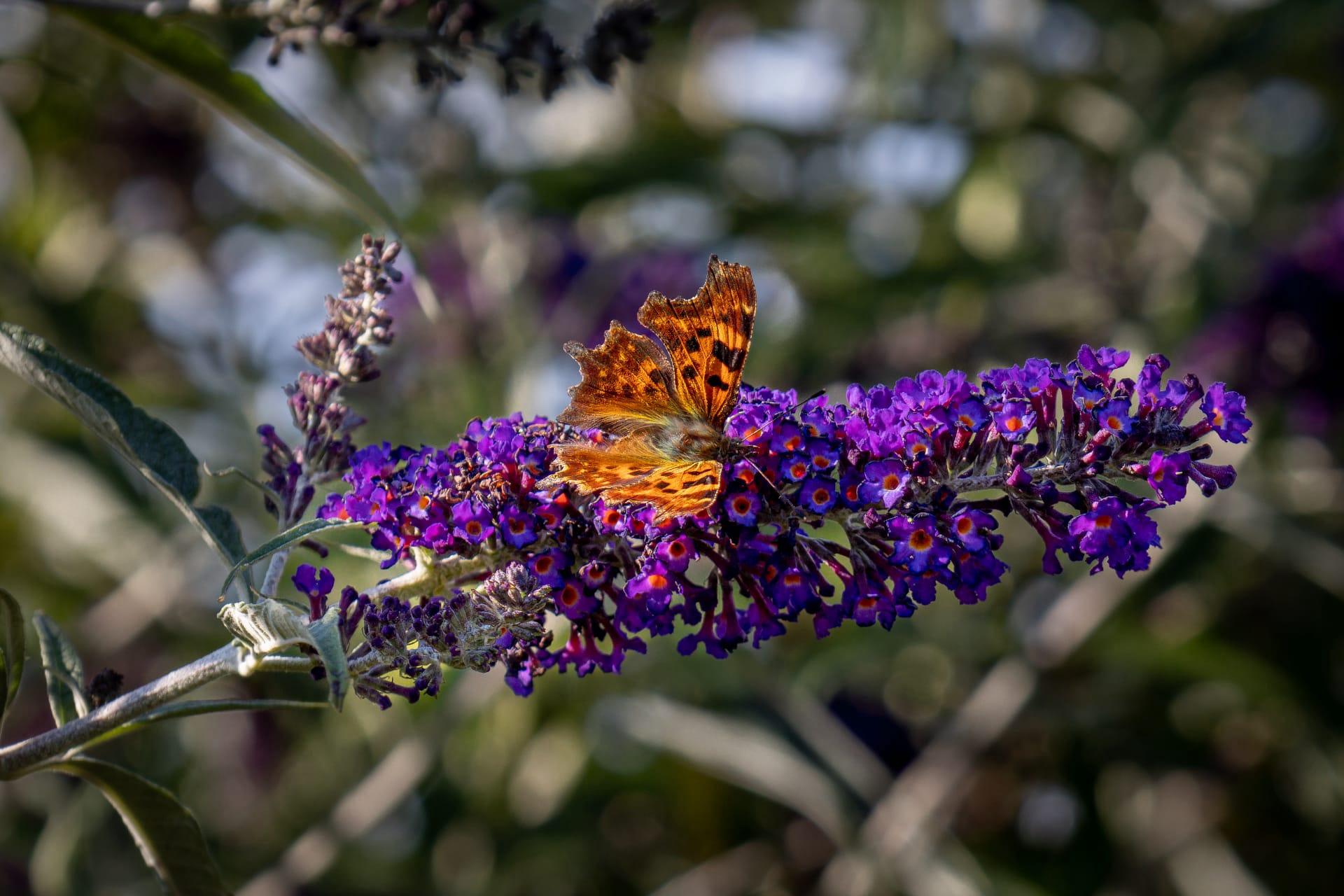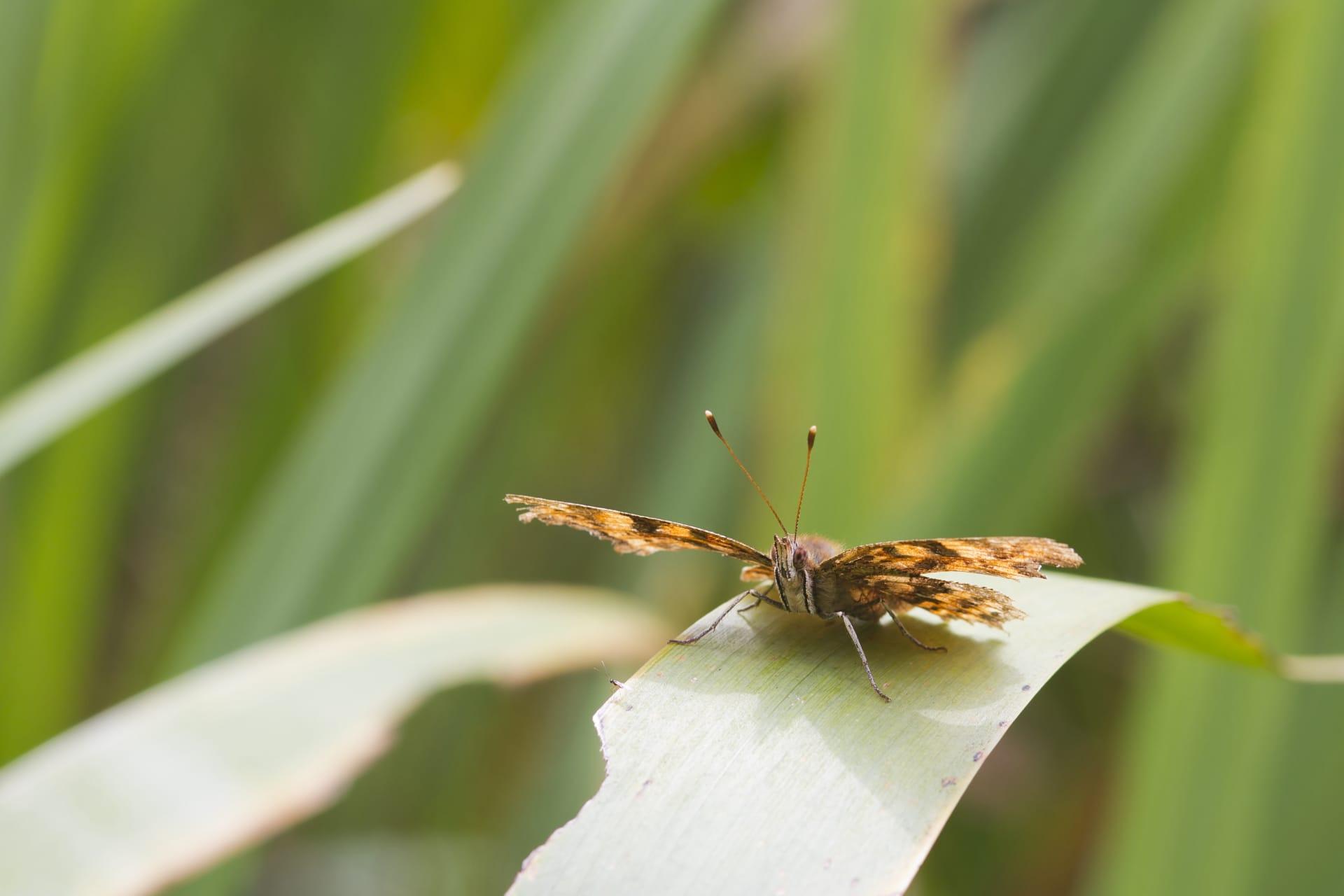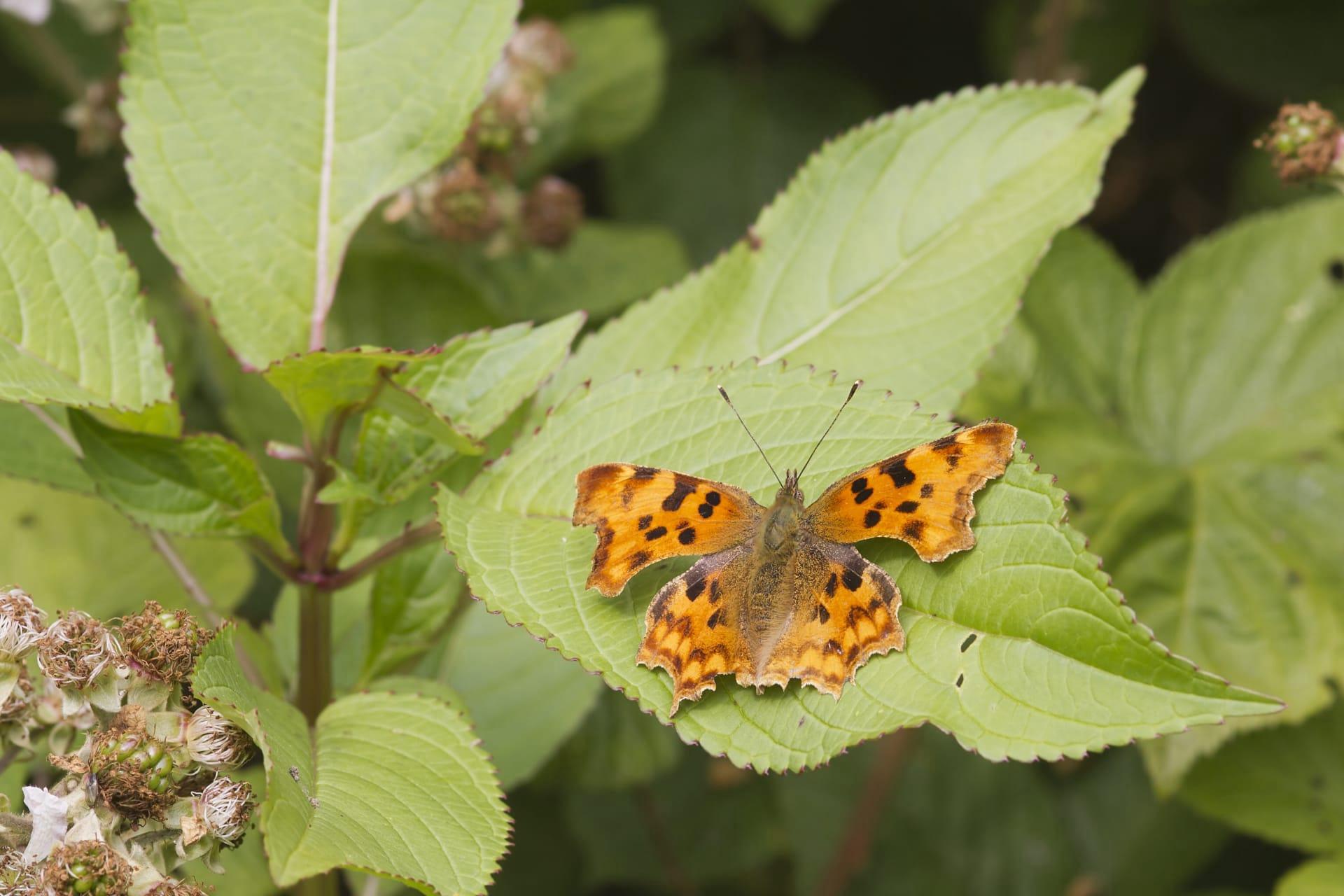Comma Butterfly
- Home /
- Mini Encyclopedia /
- Animal /
- Comma Butterfly
1
The Comma Butterfly, scientifically named Polygonia c-album, is a fascinating species in the Nymphalidae family. Known for their distinct wing patterns, these butterflies are easily recognizable. Their wings, spanning about 1.8 to 2.4 inches (45 to 60 millimeters), exhibit a unique ragged edge, mimicking a dried leaf. The upper side of their wings is predominantly orange with black and brown markings, while the underside is more cryptic, aiding in camouflage. The small white 'C' or comma-like mark on the underwing gives them their common name.
Comma Butterflies have a wide geographic distribution, predominantly found across Europe and temperate Asia. In Europe, their range extends from the UK and Ireland to parts of Scandinavia and eastwards to Russia and China. They are also native to North Africa. These butterflies thrive in various habitats, including woodlands, gardens, and hedgerows. Their adaptability to different environments is a key factor in their widespread distribution. They prefer areas with abundant nettles, which serve as the primary food source for their caterpillars.

2
Question: Do Comma Butterflies hibernate as butterflies during winter?
Answer: Yes, Comma Butterflies are among the few butterfly species that hibernate as adults. They undergo a process called overwintering, where they find shelter in crevices, under loose bark, or in other concealed spots to survive the cold months. This adaptation allows them to emerge early in spring, often before other butterfly species, to take advantage of early flowering plants. Their ability to hibernate as adults gives them a significant survival advantage, allowing them to repopulate quickly in the spring.

3
The Comma Butterfly employs remarkable survival strategies. One of their key strategies is their wing coloration, which provides excellent camouflage. The intricate pattern on their wings resembles dead leaves, making them nearly invisible when resting on a tree bark or fallen leaves. This camouflage protects them from predators like birds.
Another significant survival tactic is their reproductive strategy. Comma Butterflies produce two generations per year. The first generation emerges in spring, laying eggs that develop into the second generation by late summer. This second generation goes into hibernation during winter, ensuring the species' continuity across seasons. Their lifecycle allows them to maximize their survival and reproduction in varying environmental conditions.

4
In the ecosystem, Comma Butterflies play a crucial role as pollinators. While feeding on nectar, they inadvertently transfer pollen from one flower to another, aiding in plant reproduction. This pollination process is vital for the health of many ecosystems, contributing to the growth of a wide range of plant species.
Moreover, the Comma Butterfly serves as a vital food source for predators, especially during its caterpillar stage. Birds and small mammals often feed on these caterpillars, making them a significant link in the food chain. Their presence in various habitats indicates a healthy, biodiverse ecosystem, showcasing their importance beyond just being a beautiful species to observe.

5
Film: "Wings of Change" is a British documentary released in 2010, exploring the lives of various butterfly species, including the Comma Butterfly. The film provides an in-depth look into their life cycle, migration patterns, and challenges faced due to climate change and habitat loss.
Book: "The Butterfly Isles" by Patrick Barkham, published in the UK in 2010, is a captivating journey through the British Isles in search of every resident butterfly species, including the Comma. Barkham's narrative combines personal experiences with rich natural history, offering insights into the world of butterflies.
Book: "Butterflies of Europe" by Tristan Lafranchis, released in France in 2004, is a comprehensive guide covering over 440 European butterfly species, including the Comma Butterfly. The book is notable for its detailed descriptions, high-quality photographs, and information on habitats and distribution, making it an invaluable resource for enthusiasts and researchers alike.